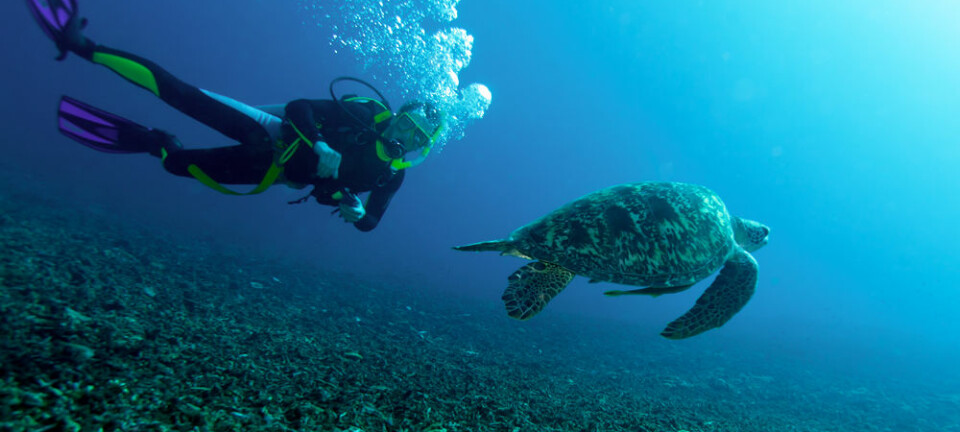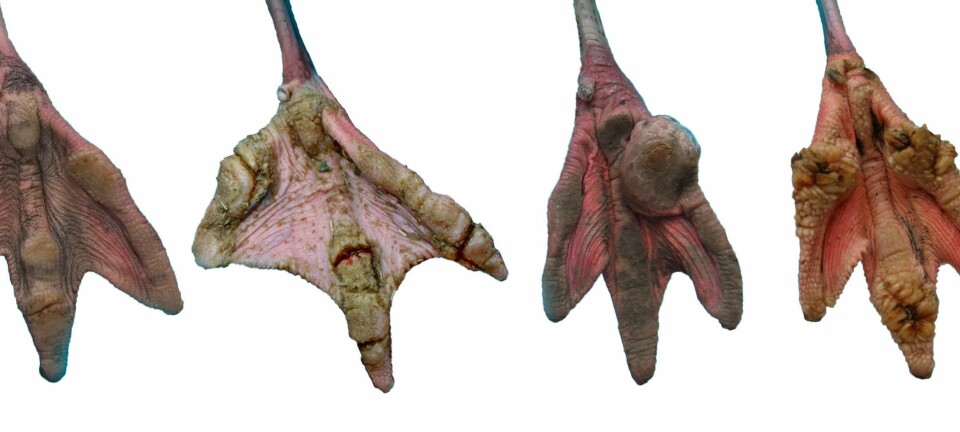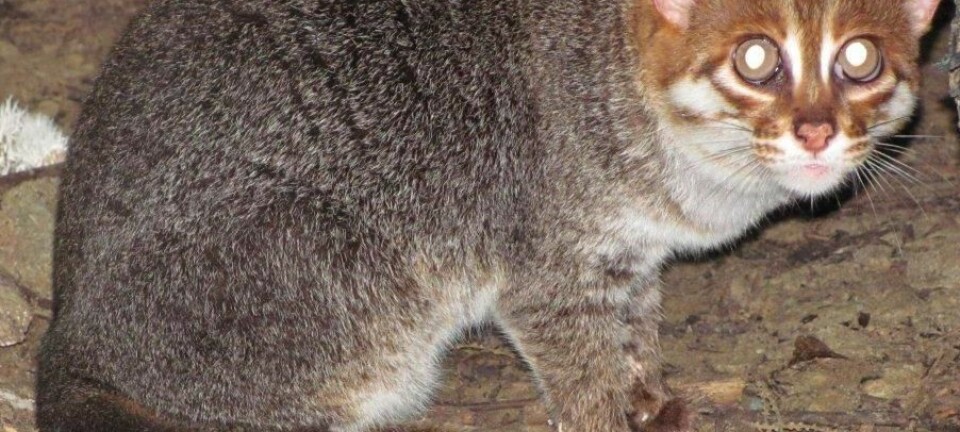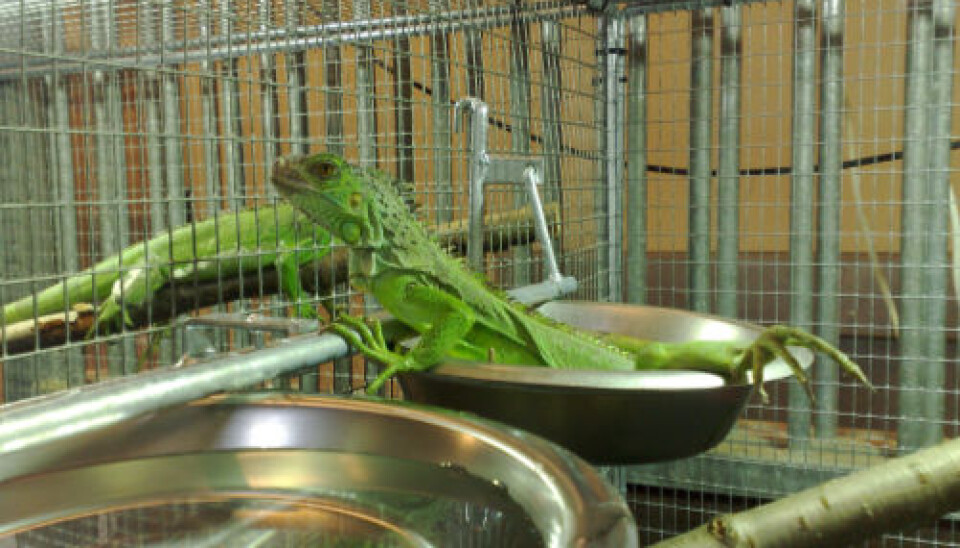
Iguana faeces reveal stress
Scientists at Copenhagen Zoo measure the stress levels in reptiles by analysing their faeces.
It can be difficult to determine when a reptile is stressed. This is because iguanas and other reptiles do not show the same signs of stress as mammals do.
But now help is at hand for animal keepers who are unsure about their reptiles’ well-being.
A new study now shows that reptiles release stress hormones into the blood stream, which can be read off in their faeces. This enables animal keepers and veterinarians to determine whether a reptile is stressed, without using blood samples and thereby further stress the animal.
”When you take a blood test you need to handle the animals, which is stressful in itself, just as there is stress associated with being pricked with a needle,” says veterinary physician Jeanette Timm, of LIFE – the Faculty of Life Sciences – at the University of Copenhagen, who was one of the researchers behind the study.
Reptile faeces frozen down and analysed
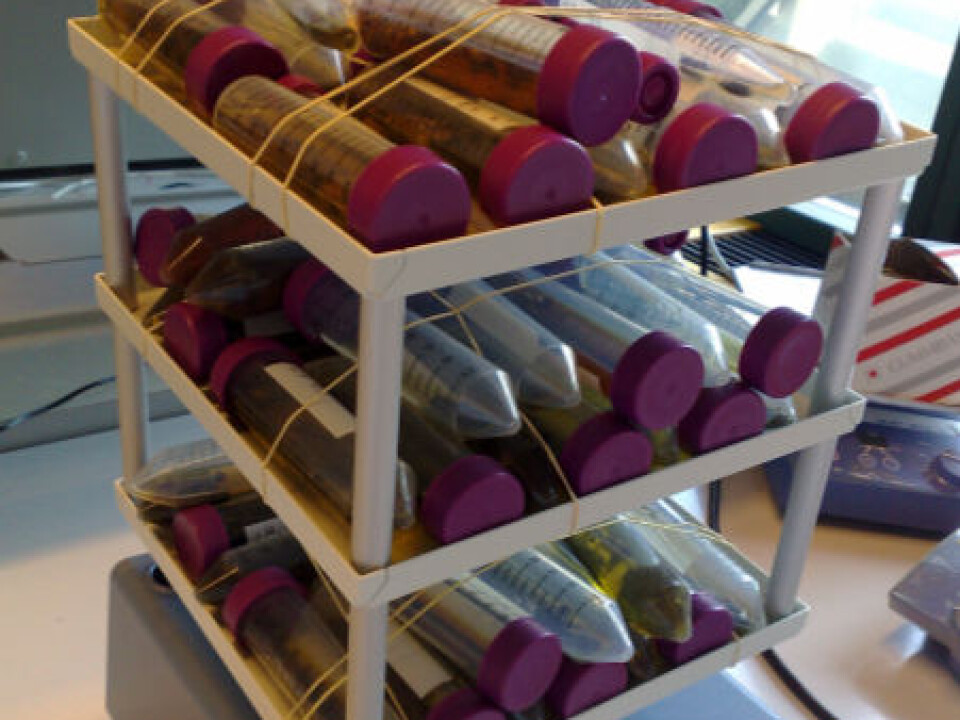
A series of previous studies have shown that the stress levels in birds and mammals could be measured in their urine and their faeces. But no scientific literature has so far provided a clear answer to whether the same applied to reptiles.
The new article, published in General and Comparative Endocrinology, can now answer this question.
Over a period of 80 days, the team collected 258 faeces samples from ten green iguanas at Copenhagen Zoo.
Five of the iguanas were exposed to stress factors, while the control group, consisting of the other five, was left to live their lives as they usually do.
A lack of security is extremely stressful. When a green iguana is unable to sit safely above the ground on a branch, it will be forced into a state of sustained stress response.
The researchers then froze down the iguana faeces to prevent the bacteria from breaking down the stress hormones.
In order to analyse the amount of stress hormones, they dissolved the faeces in alcohol, which absorbed the stress hormones.
After two rounds of centrifugation, they finally managed to measure the amount of stress hormones in the solution.
Environmental stressors
Timm explains that reptiles get stress from a number of different sources. For instance, if the cage, or the terrarium, has the wrong temperature, wrong levels of humidity or if it’s designed in a way that prevents the reptile from behaving naturally.
This is backed up by co-author Otto Kalliokoski:
”Our studies have shown that a lack of security is extremely stressful,” he says. “When a green iguana is unable to sit safely above the ground on a branch, it will be forced into a state of sustained stress response.”
The handling of reptiles also presents them with a significant stress factor. It’s important to keep stress factors to a minimum because stress can have a harmful effect on them.
It’s easy to overlook stress signs in reptiles, says Timm, and before you know it, the stress can have reached critical levels.
“Just as for us humans, chronic stress affects the reptiles’ immune system and makes them more vulnerable to disease, and could at worst cause the animal to die,” she says.
The reptiles don’t defecate on their décor
The study identifies inferior conditions of the cages as the greatest stress factor for the reptiles at Copenhagen Zoo. Kalliokoski hopes the study can help to optimise the housing conditions for the reptiles:
“Reptiles are bad at filling out questionnaires,” he says.
“So when we try to improve on their cages, we will mostly be looking at what their natural environment looks like and then try to emulate that as best we can. Whether we are successful with it is hard to say because the reptiles won’t tell us.”
However, their new discovery has made it possible for the reptiles to reveal a little of what they think of their home by defecating on it.
”It might also be desirable to refine the method so that in the future it will be a lot easier to conduct stress experiments on reptiles, which do not involve stressful blood tests,” says Timm.
-------------------------------
Read this story in Danish at videnskab.dk
Translated by: Dann Vinther
